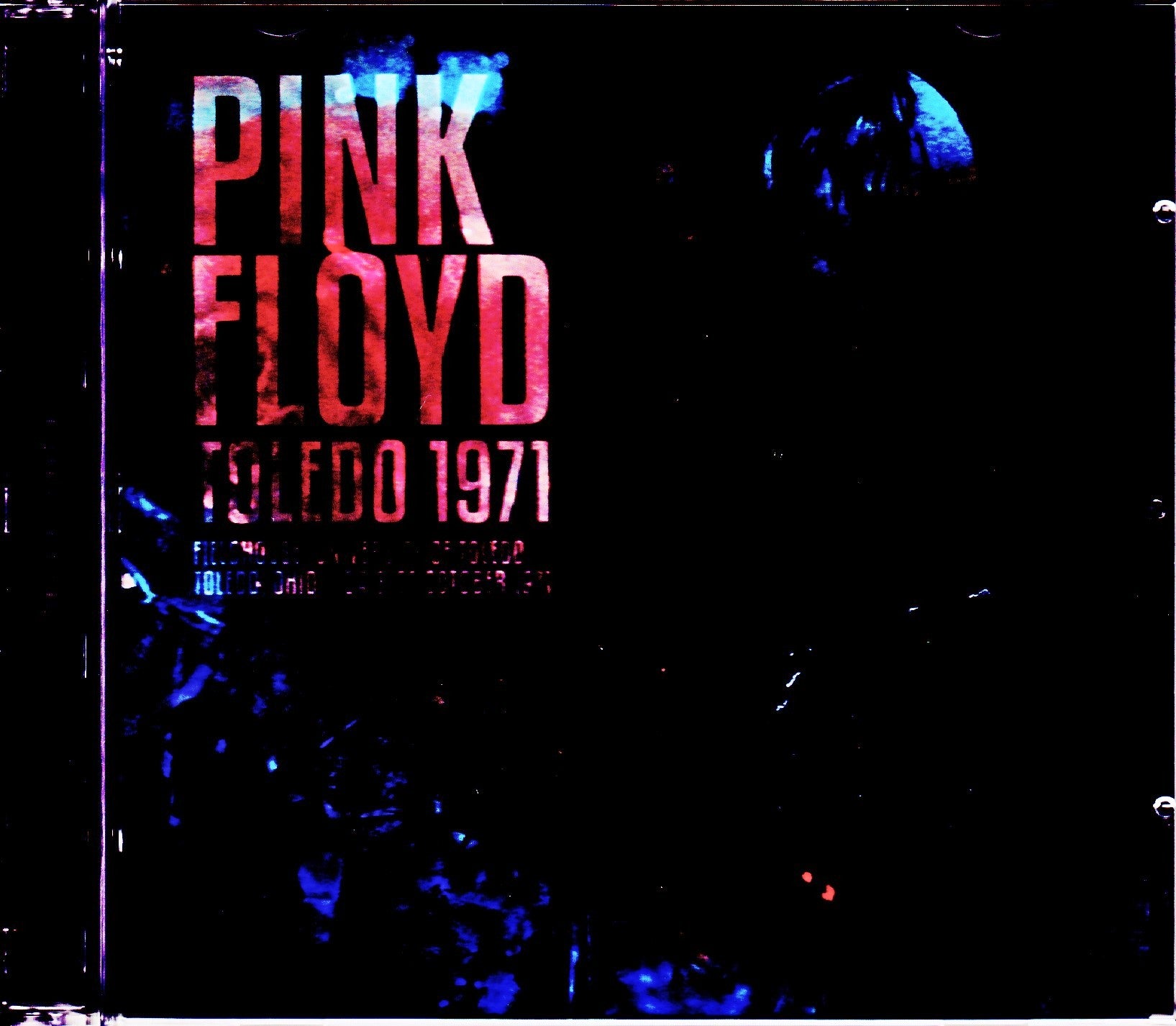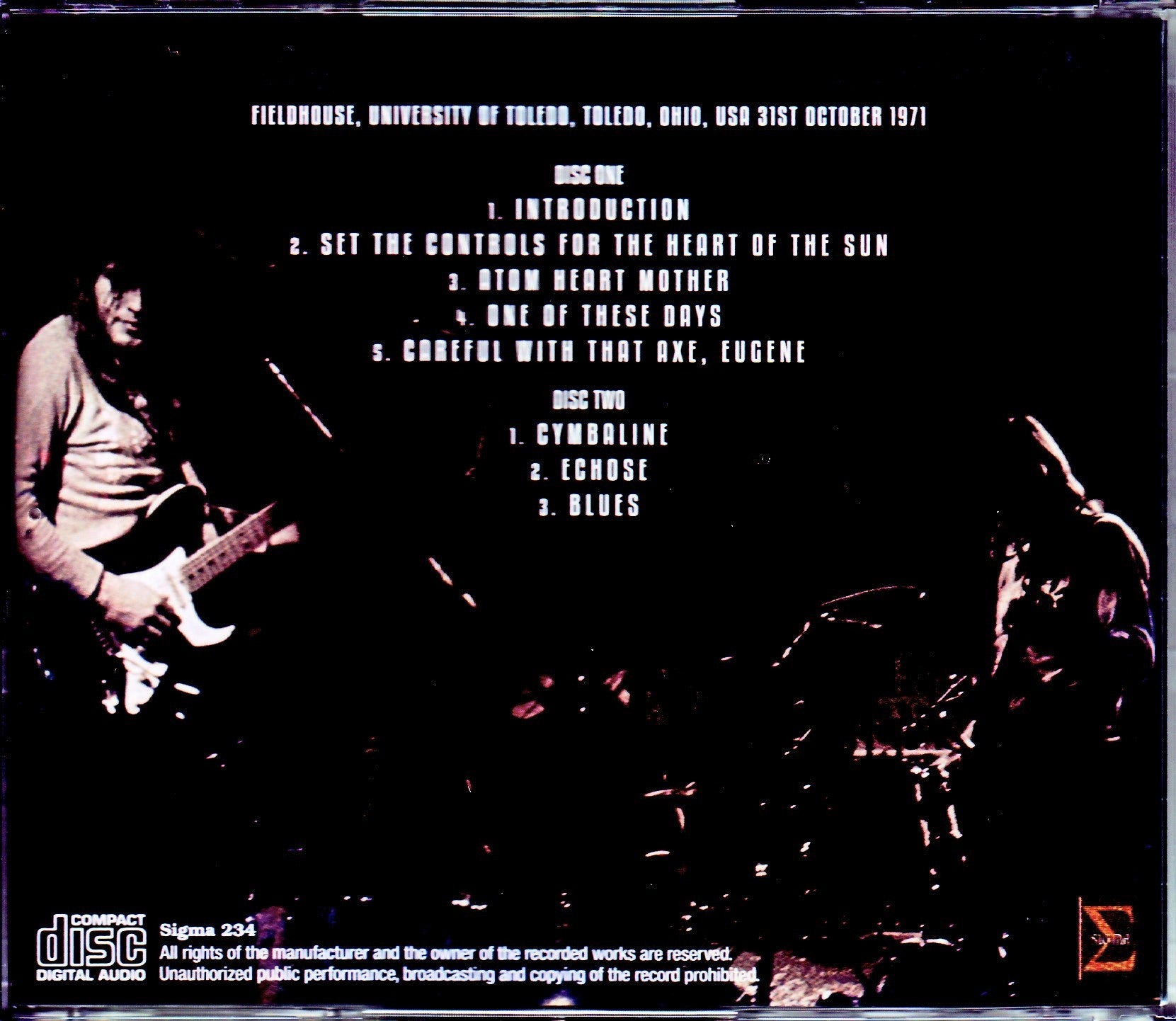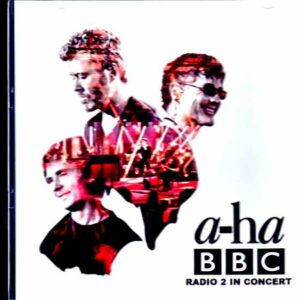Description
October 31, 1971, Toledo, Ohio, USA. On this Halloween day, two and a half months after his first visit to Japan with Aphrodite in Hakone and the Osaka performance, Floyd was halfway through his North American tour following the release of his album “Meddle”.・How many people are immediately drawn to the Toledo performance? In fact, the sound source of this day has rarely been made into a record in the past, and it was one of the performances that was not very familiar to sound source fans. The title of the album was previously released as “UNIVERSITY OF TOLEDO 1971” in May 2014, but unfortunately, it is basically a less prominent 1971 sound source that is basically in the corner of the tape trader list. That is the current position. When I listen to this 2014 title (hereinafter referred to as the previously released version) and think about why this sound source has not received much attention, two reasons come to mind. First of all, it is an incomplete recording. Considering the timing, “Embryo” and “Fat Old Sun”, which were probably played at the opening, have not been recorded, and the recording begins with the tuning scene before “Set The Controls For The Heart Of The Sun” starts playing. This imperfection probably makes it less impressive. The second reason is “sound image” rather than sound quality. Originally, it was recorded in monaural, but this previously released version was recorded in stereo to give it an upper feel. Therefore, the sound image was wide and had a unique listening response, but on the other hand, it also had the penalty of being different from the original sound image. …However, there is also the current situation that there are no other notable titles that have been made into sound discs, and since then, this previously released version has been the representative title of the 1971 Toledo performance for fans for many years. This August is the height of summer. A bright ray of light shone on this sound source, which had been out of the spotlight for a long time, just like the sunlight on a summer evening. Although the source was the same, a brand new transfer sound source with a shocking upper feeling throughout the sound was introduced, surprising fans all over the world. This was released by Mr. Neonknight, a well-known person who is familiar with Floyd sound sources, and he has polished up a cassette source that is quite close to the master recording owned by sound source collector TrollerWes, and brought back a very high-grade sound image to the present day. It was. The feature of this “TrollerWes version” cassette is that it is the same source that followed a different route from our 2014 previously released version, and the first advantage is that the recording time is longer than the previously released version. Masu. However, what is truly surprising is the sound, which is a genuine high-quality monaural source recorded by the master, and the sound remains, and the overwhelming extension of the resonance and the closeness of the sound are outstanding everywhere. A rare sound source that retains many traces of the original master recording in terms of length of recording time and sound, the shock of Toledo in 1971…The world’s fastest 2-CD version of the 2019 TrollerWes version source is completely sealed in this latest version. It is “UNIVERSITY OF TOLEDO 1971”!! Track (1) “Introduction” is proof that it is not a rehash of an already released version or a mere sound image adjustment version. This is recorded about 22 seconds longer than the previously released version, and the advantage of the TrollerWes version source suddenly peeks out from the beginning of the disc. When “Set The Controls For The Heart Of The Sun” starts before the excitement wakes up, you will notice that the sound is of a different grade from the previously released version. This introductory part had a noisy sound image that looked like it was about to shake off the REC meter on the previously released version, but by returning to the original monaural sound, that explosive sound has become loud with rich texture, and the sound image is sharp and tight. I can feel it happening. Roger’s voice, which is echoed, also has a raised outline due to the accuracy of the focus, and even in the section where the tempo gradually increases in the middle, the sound image, which was previously deep, comes to the fore, capturing the expression of the sound. However, everyone will be astonished by the new sound image that envelops this with an overwhelming sense of volume. Similarly, “Atom Heart Mother” also has a distinct sense of direct impact, with the excitement of that explosive sound that felt vaguely distant exploding sharply right in front of your eyes. Gilmore’s guide vocal, which comes in in the middle, has a clearer high range and no blurring than before, and the upper feeling of the sound image is increasing due to being monaural. The tuning that unfolds for a while after the song ends is also recorded uncut for about 1 minute and 45 seconds, but since this is a tuning scene with a lot of sound, it will double the pleasure of listening. In “One Of These Days,” the radiation of wisdom that gushes out from the driving force of the performance reaches your ears with the power of high-quality monaural music. Especially when you listen to the second half after the scream, you can see that the clarity of the midrange has improved dramatically, and the performance appears crisper and closer than before. “Careful With That Ax, Eugene” also has a clear high note (*Roger’s screams and cymbal sounds are heard here and there. You’ll be surprised to hear that the organ’s tone has also increased in volume and sharpness) and the center of gravity. The contrast between the low tones is vivid, and the way each instrument intertwines with each other after the scream is sure to leave you overwhelmed by the vivid sound image with no blur. By the way, the recording time of this song is shorter than the previously released version, but this is because the tape source used on the previously released version is a duplicate of some scenes (* Previously released version 8: 17 to 37 seconds), this time there is no duplicate scene, and the fact that you can listen to the actual original performance and length is also a topic of the TrollerWes version source. Also, one more thing related to this is that the applause scene after the performance ends only for a few seconds at the beginning of disc 2. This is the TrollerWes version source as it is, but among the same sources on the market, there is a version that cuts out before the end of the song due to the tape used for dubbing running out, and the TrollerWes version is different from that. This is to indicate that it is the source. The reason why the 37 seconds from 8:17 on the previously released version of the tape mentioned above is recorded as a double for some reason seems to be a sign that the owner of the tape used tried to repair it when transferring it using a source with cuts, You should be able to tell that the TrollerWes version source is a higher-level source with no trace of that. As before, “Cymbaline” is cut in from a little before the song starts, but the sound image has improved output and performance in all bands. You will feel the closeness of the sounds coming out in front of you. In particular, the wave of the sound and the spread of the aftertaste are monaural, but you can feel the charm of polyphony, and you will realize that the sound image is significantly different from anything you have heard before. Unfortunately, this TrollerWes version also cuts out in the latter half of the footsteps sequence (probably due to a tape change), but the subtle nuances of the sound effects in this scene, which were difficult to grasp in the previously released version, stand out clearly. The fact that it can be reached by sound is noteworthy. Also, the silent part that cuts out from 7:20 onwards was deleted from the previous release, but this time it is left as it is in the source. Omagari “Echoes” should be overwhelming from the beginning with the amount of information carried by the sound image from the introduction. The harmony between Gilmore and Wright and the subtle differences in their breathing from their vibrato are vividly felt, and the ensemble also has an overflowing resonant feel. In the scene where the albatross calls, the mysterious change in mental images that appears when the sound is made into a tree spirit becomes much more vivid, and you will be able to fully enjoy the joy of hearing the vibrations of that tone in even better condition. Also, on this day, “Blues”, which was performed instead of “A Saucerful Of Secrets” (I think), no longer has the muddy sound image of the previously released version, and the loose sound is a scorching monaural sound that is a pleasure to listen to. It is a solid 5 minutes and 40 seconds. This is not unique to this work, but the upper feeling obtained by changing the source used is accompanied by a completely different listening response and excitement than the upper feeling obtained by improving the same source with equalization adjustment. The 1971 Toledo that you listen to with the TrollerWes version source is exactly like this, and the closeness and clarity of its sound, and the longest recording time that approaches the complete master recording, are the length of the musical range that Floyd released on that day = that. This makes the power of moving the listener’s consciousness further afield. With the appearance of this latest work, we will no longer be able to say that this performance is “a not-so-distinguished 1971 sound source in a corner of the tape trader’s list”. Fieldhouse, University Of Toledo, Toledo, Ohio, USA 31st October 1971 TRULY AMAZING SOUND(UPGRADE) Disc 1 (48:24) 1. Introduction ★Intro is 22 seconds long 2. Set The Controls For The Heart Of The Sun 3. Atom Heart Mother ★15:47 – 15:48 was cut from the previous episode. 4. One Of These Days 5. Careful With That Ax, Eugene ★0:00 – 0:01 was cut from the previous release. Disc 2 (36:09) 1. Cymbaline★The silence from 7:20 has been deleted from the previous release. 2. Echose ★1 second from 23:02 was cut from the previous release. 3.Blues







Reviews
There are no reviews yet.